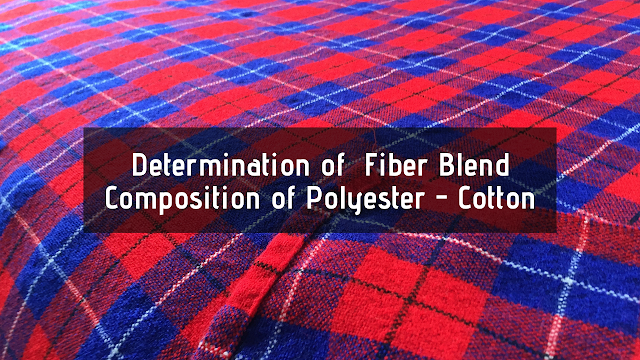Fiber Blend Composition of Polyester – Cotton
Scope
This SOPS prescribes a method for quantitative chemical analysis of binary mixtures of polyester fibre and cotton or cellulose fibre in any form, yarn or fabric.
Cellulose Fibres
- Cotton
- Viscose
Apparatus
- Drying Oven – It shall be capable of maintaining a temp of 105 ± 3°C .
- Analytical Balance – Capable of weighing an accuracy of 0.0002 g
- Conical Flask – 250 ml
- Desiccator
- Sieve
Reagent
- Sulphuric Acid solution Reagent grade, 75 % (m/m) specific gravity 1.67 at 27°C.
- Diluted Ammonia Solution – Adding 80 ml Concentrated Ammonia (Specific gravity 0.89 ) and making up to one litre with water.
Procedure
- Sample weighing about 2.0 to 3.0 g. Cut the yarn into pieces and dissect the cloth into yarn pieces of about 10 mm length.
- Dry the sample in oven at 105 ± 3°C for 30 min.
- Cool in a Desiccator and weight them 1 gm sample (W)
- Treat the weighted out sample taken in a conical flask with 100 ml of 75% sulphuric acid solution.
- Stopper the flask and shake it carefully to wet out the sample completely.
- Maintain the flask at room temperature for 30 minutes.
- Filter the content of the flask through a sieve.
- wash the residue on the filter sieve with water, diluted ammonia solution and finally distilled water.
- Dry the residue in the drying oven at 105 ± 3°C to constant weight,
- Cool in a desiccator and weight them (W1)
Calculation
Polyester fibre (%) = W1*100 / W
Where
- W1 – Dry weight of residue
- W – Dry weight of sample
References – IS 3416-1: Methods for Quantitative Chemical
Analysis of Binary Mixtures of Polyester Fibres With Cotton or Regenerated
Cellulose, Part 1: Sulphuric Acid Method
Analysis of Binary Mixtures of Polyester Fibres With Cotton or Regenerated
Cellulose, Part 1: Sulphuric Acid Method
